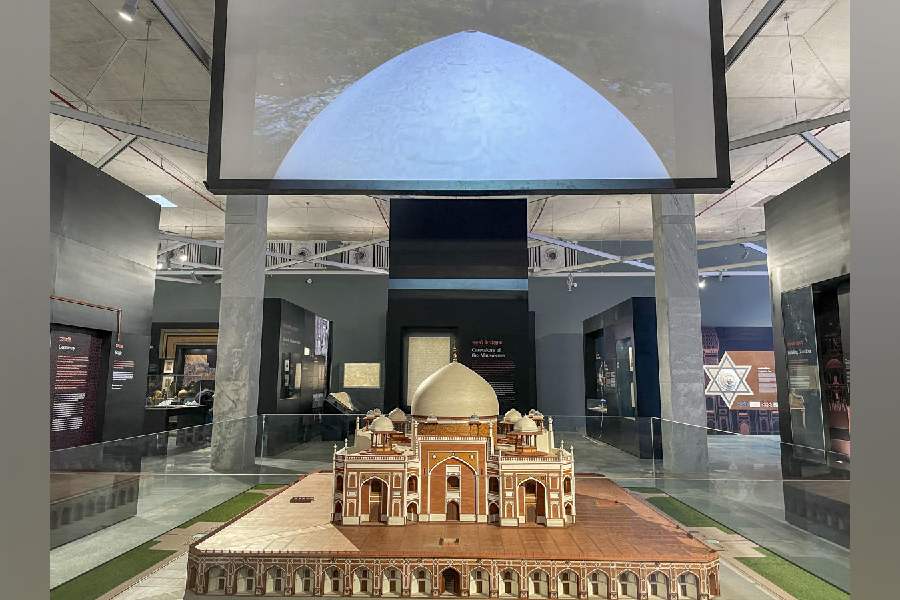The country's first sunken museum at the Humayun Tomb complex -- a UNESCO World Heritage Site -- in Delhi is all set to be inaugurated on Monday.
It will open for visitors from July 30, a senior official of the Archaeological Survey of India (ASI) said.
Union Culture and Tourism Minister Gajendra Singh Shekhawat is slated to inaugurate the new museum in the presence of Prince Rahim Aga Khan.
The inauguration will coincide with the ongoing 46th session of the UNESCO World Heritage Committee here.
The museum, whose layout is inspired by the medieval 'baolis', or traditional water tanks, showcases the legacy of Mughal emperor Humayun, including lesser-known facets of his life, and the heritage of the Nizamuddin area over the last seven centuries.
The finial of the Mughal monument (Humayun's Tomb) which was knocked off in a 2014 storm is its "centre-piece".
Other old artefacts on display include 'farmans', an astrolabe, a celestial sphere of the 1840s era and a warrior's helmet from approximately the 16th or the 17th century.
Work began on the construction of the country's first sunken museum at the iconic 16th-century tomb here in April 2015. The project was earlier planned to be inaugurated in 2017.
The ramps and giant sheesham doorways lead to a subterranean world where the story of the second Mughal emperor, the scholar and the traveller comes alive. Humayun's remarkable life is retold through paintings, scrolls and artefacts.
Using cutting-edge technology, the iconic museum in south Delhi also meticulously recreates the timeline of the construction of the 14th-century Nizamuddin Dargah complex in its vicinity through 3-D videos complemented with detailed wooden scale models.
The museum has been constructed at the entrance zone of the world heritage complex and would serve as a bridge between the three sites of Nizamuddin, Sunder Nursery and the 16th-century tomb, which was inscribed on the World Heritage List in 1993 with minor boundary modification in the inscription in 2016 making it a heritage complex.
The first principal gallery of the museum, 'Where the Emperor Rests', highlights the architectural splendour of Humayun's mausoleum, and the personality of the emperor is depicted through exhibits telling stories of his travels, marriage, administration of his kingdom, his deep interest in reading, astrology and the arts, and his patronage of architecture and gardens.
Architectural models of the tomb, an architectural design plan showing the layout of the first floor of the tomb, rare paintings, meticulously made replicas of chhatris and dome artwork, along with digital walls playing videos on the creation of the magnificent mausoleum are a treat to the eyes.
The tomb of Humayun was built by his widow, Biga Begum (Hajji Begum), in 1569-70, 14 years after his death, according to a portal of the ministry of culture.
The Aga Khan Trust for Culture (AKTC) has built the museum on behalf of the ASI as part of the urban renewal initiative.
Except for the headline, this story has not been edited by The Telegraph Online staff and has been published from a syndicated feed.












